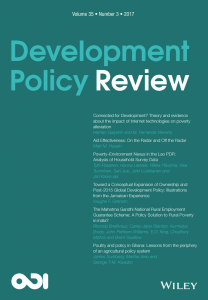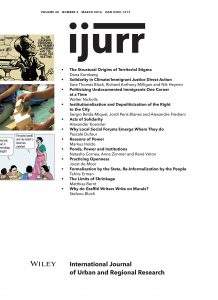Situating Strain within Late Modernity
 Robert K. Merton, in 1938, began delving into how societal arrangements could create, maintain, and exacerbate social tension and individual stress. His theory of ‘strain’ – tremendously oversimplified – proposes that crime/deviance becomes more likely when a disjuncture exists between culturally derived ends (i.e. monetary success) and what the social structure makes possible. This theoretical framework, from its onset, has been the focus of numerous efforts; being tested, criticized, buttressed, and modified to increase its viability. As a result, sociology and criminology now offer a variety of strain models so as to enhance an understanding of criminogenic conditions, criminal behaviors, and social deviance (see Merton, 1938; Cohen, 1955; Cloward & Ohlin 1960; Agnew, 1992, 2002; Messner & Rosenfeld 1994). However, criminologists and sociologists alike are recognizing conditions that, once again, may result in the modification or further development of the strain tradition.
Robert K. Merton, in 1938, began delving into how societal arrangements could create, maintain, and exacerbate social tension and individual stress. His theory of ‘strain’ – tremendously oversimplified – proposes that crime/deviance becomes more likely when a disjuncture exists between culturally derived ends (i.e. monetary success) and what the social structure makes possible. This theoretical framework, from its onset, has been the focus of numerous efforts; being tested, criticized, buttressed, and modified to increase its viability. As a result, sociology and criminology now offer a variety of strain models so as to enhance an understanding of criminogenic conditions, criminal behaviors, and social deviance (see Merton, 1938; Cohen, 1955; Cloward & Ohlin 1960; Agnew, 1992, 2002; Messner & Rosenfeld 1994). However, criminologists and sociologists alike are recognizing conditions that, once again, may result in the modification or further development of the strain tradition.
Whilst strain theory has made significant contributions to scholarship, it has yet to take into consideration the social, economic, and political conditions that construct contemporary society. Despite the influence of the strain paradigm, Hayward states that ‘theorists have been somewhat reluctant update early strain models in light of the particular cultural and economic changes associated with late modernity’ (2004: 158). He continues to show that Morrison (1995) has argued that criminology is in need of more sophisticated analyses of the emotive underpinnings associated with strain and/or anomie:
Criminology not only operates with underdeveloped models of desire, but also largely restricts itself to narrow interpretations of strain theories; wherein crime in the result of frustration by the social structure of the needs which culture indentifies or the individual. Today, even in the most contemporary of mainstream criminological theory, ideas of positionality and status are underdeveloped. Instead ideas of needs and greed predominate. (Morrison, 1995: 317 as found in Hayward, 2004: 158)
Recently, scholars have begun to redirect their intellectual gaze to appreciate and examine the conditions associated with late modernity. More specifically, research has focused on how contemporary conditions associated with advanced capitalism and intensified governance has influenced crime and crime control practices. An expanding interest within criminology, namely Cultural Criminology, has emerged that attempts to empathetically understand and appreciate the underlying emotions and immediate motivations of crime and delinquency (Ferrell, 1996, 2006; Ferrell et all. 2008, Hamm, 1993; Hayward, 2004; Lyng, 1990; Presdee, 2000; Young, 2007). This line of scholarship has at its core the study of how cultural dynamics entwine with crime and crime control within late – dare say it – postmodern society.
Here, there is an attempt to move beyond viewing crime as an instrument to gain culturally defined wealth to include those transgressions which are expressive and symbolic in nature. Hayward posits that an understanding of contemporary crime and justice issues requires an exploration into such ontological insecurities: the ‘feeling physically and psychologically at risk in an unstable and changing world’ (2004: 15). This work calls attention to a world experiencing intensified forms of control while at the same time experience constant flux in meaning (Young, 1999 and 2007; Hayward, 2004; and Featherstone, 1995).
As theorists have noted, the governmental promise to secure safety and security for all citizens has fallen short. Consequentially, this has allowed the state to mobilize popular fears and insecurities to usher in more invasive and excessive forms of control (Simon, 2007). This intensified form of governance has created over-controlled subjects existing in a highly managed society where avenues for thrill, excitement, and extreme emotional experience are absorbed by a culture necessitating risk avoidance. Ontological upheaval is the result.
Underpinning transgressive behaviors, perhaps, is an insatiable desire to escape from under the regulatory juggernaut emanating from the aforementioned late-modern preoccupation with safety and order (Hayward, 2004). As efforts increase to include more behaviors under the umbrella of control, individuals experience ontological strains that can be alleviated by engaging in transgressive behaviors. Rather than the result of being blocked from achieving the ‘American Dream’, individuals may experience sources of strain by not fulfilling individual needs (identity, excitement, emotional stimulation) due to contemporary modes of governance.
Read:
Hayward (2004) City Limits: Crime, Consumer Culture, and the Urban Experience. London: Glasshous Press
Ferrell, Jeff, Hayward, Keith, and Young, Jock (2008) Cultural Criminology: An Invitation. London: Sage.
Williams, P.J (2007) Youth-Subcultural Studies: Sociological Traditions and Core Concepts. Sociology Compass, 1(2)
Anderson L. & Brown, M. (2010) Expanding Horizons of Risk in Criminology. Sociology Compass, 4(8)



1754-9469/asset/society_affiliation_image.gif?v=1&s=9197a1a6ba8c381665ecbf311eae8aca348fe8aa)
